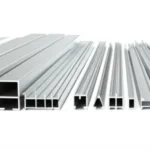A stainless steel angle bar, often referred to simply as a stainless angle, is a versatile structural shape characterized by its L-shaped cross-section with two legs meeting at a 90-degree angle. These legs can be of equal or unequal length. Thanks to the inherent properties of stainless steel, particularly its excellent corrosion resistance, strength, and durability, these angles find use in a wide array of applications across various industries.


Key uses include:
- Structural Support: Providing framework, bracing, and supports in construction projects, machinery, and equipment. Their strength-to-weight ratio makes them efficient structural components.
- Architectural Applications: Used for trim, finishing touches, corner guards, and decorative elements due to their clean appearance and resistance to environmental degradation. Polished finishes are common in these applications.
- Manufacturing and Fabrication: Utilized in building racks, shelves, brackets, frames for enclosures, and various custom fabrications where strength and resistance to rust are necessary.
- Food Processing and Medical Industries: The hygienic properties of stainless steel (easy to clean, non-reactive) make angles suitable for equipment stands, supports, and structures in sanitary environments. Grade 304 or 316 are typically used here.
- Marine Environments: Grade 316 stainless steel angles are particularly favored in coastal or marine applications due to their enhanced resistance to chloride corrosion (saltwater).
- Chemical Processing: Used in constructing supports and frameworks within chemical plants where resistance to corrosive substances is paramount.
The specific grade of stainless steel angle bar chosen will depend heavily on the environmental conditions, required strength, and specific application demands. Its versatility makes it a fundamental component in modern engineering and construction.
What is a stainless steel angle bar used for? — This article provides a practical buyer‑focused overview with specifications, selection tips, and on‑site considerations. Explore related topics: blog.
Key Specifications and Standards
- Standards: ASTM / EN / JIS (e.g., ASTM A240/A36, EN 10088/10025, JIS G4304/G3131).
- Surface options: 2B, BA, No.4, HL, mirror; galvanized (electro / hot‑dip).
- Processing: hot‑rolled, cold‑rolled, annealed & pickled, welded or seamless.
- Typical services: slitting, shearing, cut‑to‑length, drilling, beveling, deburring.
- Documentation: MTC, CO, packing list with net/gross weight and heat numbers.
Typical Applications
Construction, machinery, automotive, energy, enclosures and fencing, food equipment (for stainless), and general fabrication. Match grade and finish to corrosion, strength, and appearance requirements.
Selection Guide
- Use certified material with Mill Test Certificate (MTC).
- Confirm standards (ASTM/EN/JIS) and tolerances per drawing.
- Match surface finish to application (2B/BA/No.4/galvanized).
- Specify dimensions and acceptable deviation upfront.
- Plan packaging and corrosion protection for transit.
Processing, Packaging and Logistics
We adopt edge protection, waterproof wrapping, rust‑inhibiting paper, fumigated pallets, and strapping suitable for sea freight. Loading photos and weight lists are provided for each shipment.
FAQs
Q: What lead time can I expect?
A: Typically 7–15 days ex‑works for standard sizes; custom processing may extend the schedule.
Q: Can you provide cut‑to‑size service?
A: Yes. We slit, shear, cut, drill, bevel and deburr to drawing to reduce waste and speed installation.
Q: How do you ensure quality?
A: Incoming inspection, process control, and final inspection with traceable heat numbers; third‑party inspection is available.
Q: Do you support small trial orders?
A: We support pilot quantities with consolidated shipping to control cost.
All values are typical and for guidance only; confirm with the datasheet and purchase order before production.
Related products: view details.
Related products: view details.





